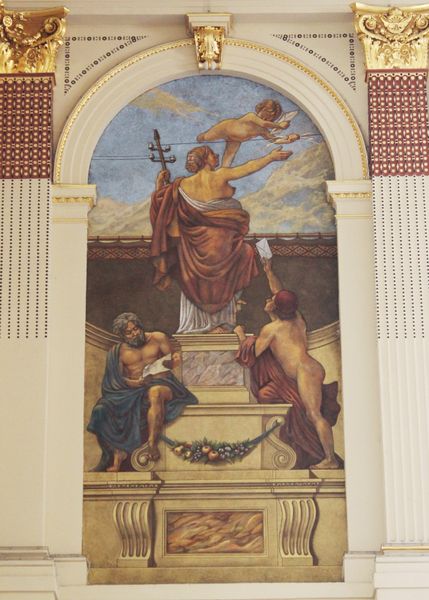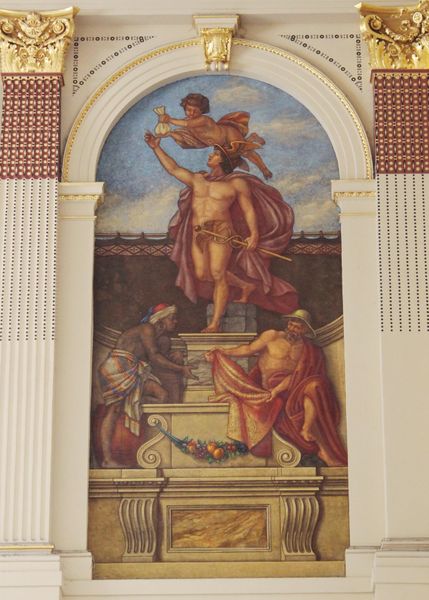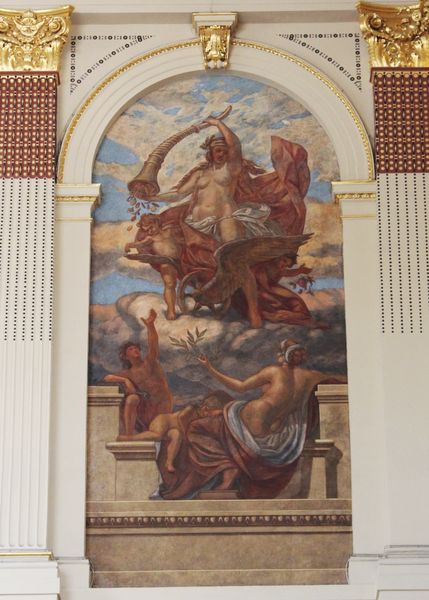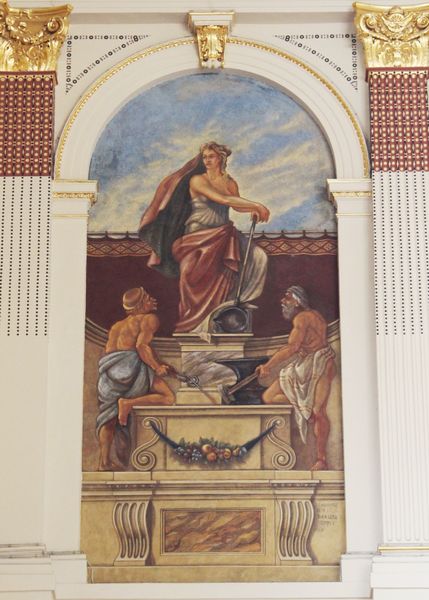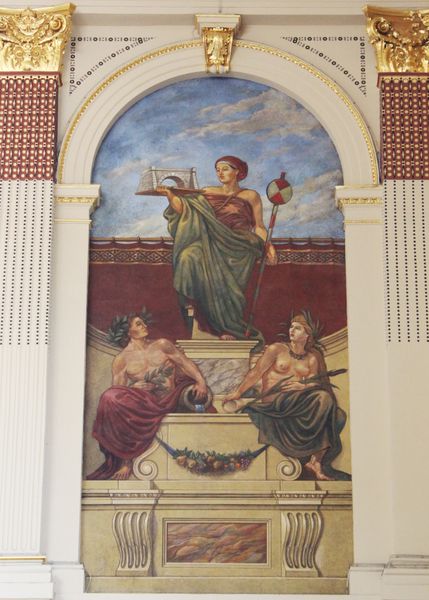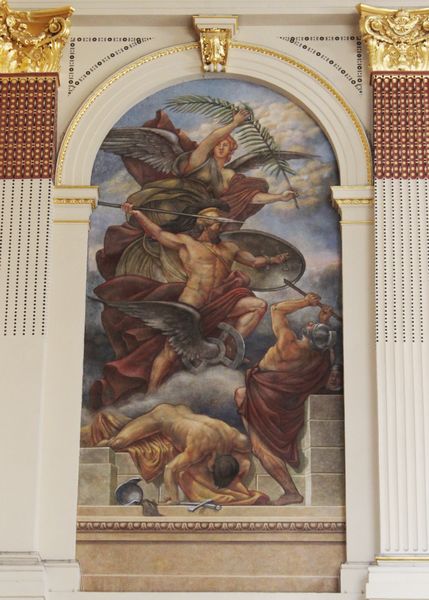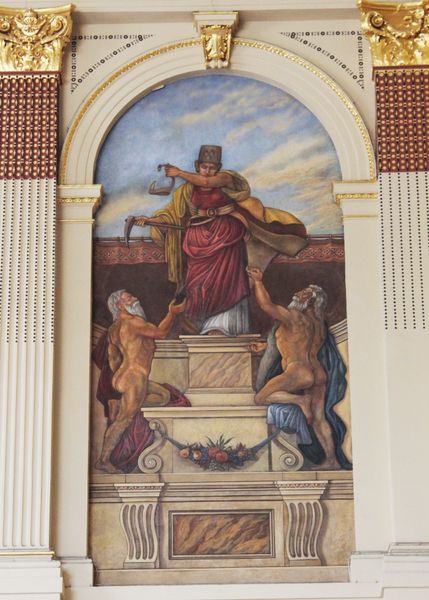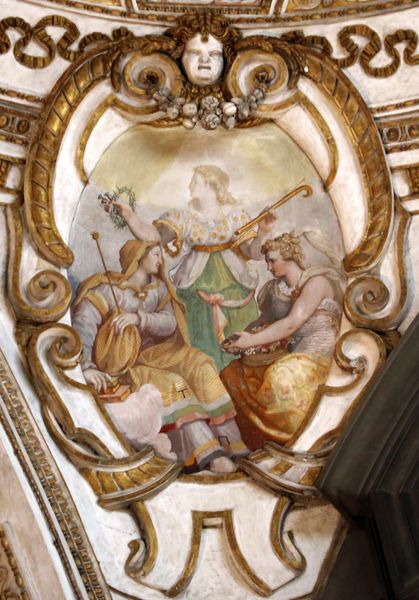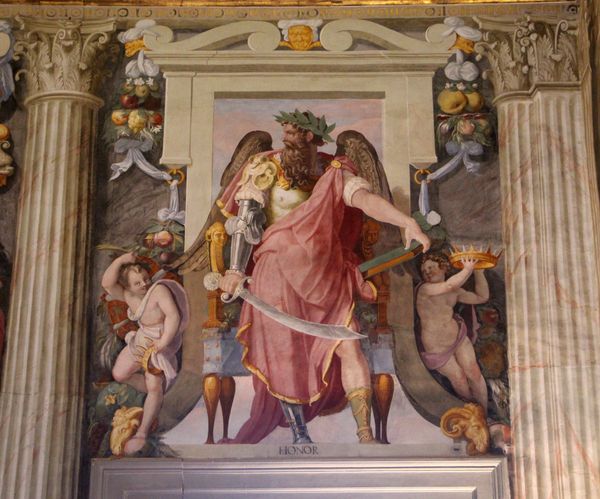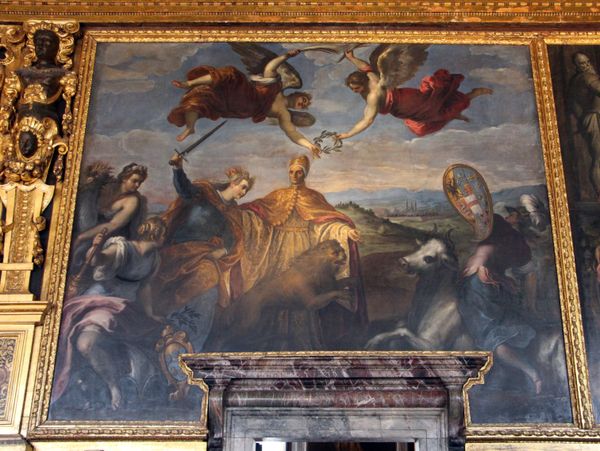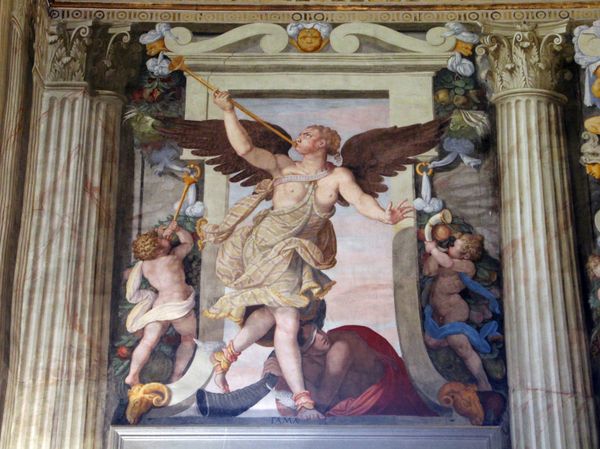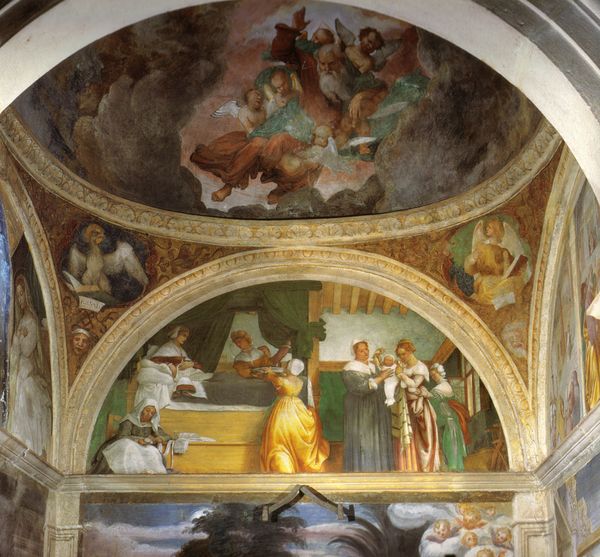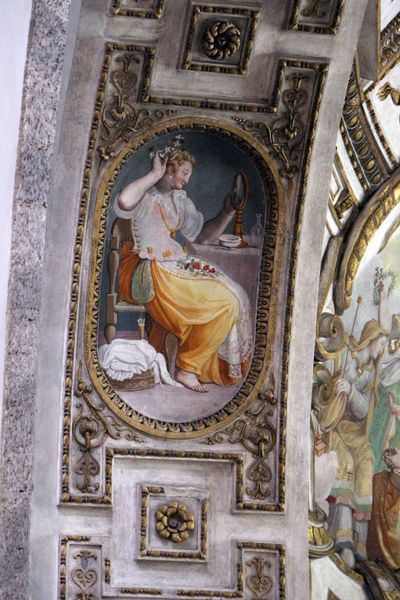
painting, fresco, mural
#
allegory
#
painting
#
classical-realism
#
figuration
#
historic architecture
#
fresco
#
traditional architecture
#
history-painting
#
academic-art
#
mural
#
watercolor
#
realism
#
historical building
Copyright: Public domain
Editor: Here we have Károly Lotz's "Agriculture" from 1884, a mural or fresco with figures in the classical style. I'm struck by the emphasis on the human body. What story is it trying to tell, and how does the artist go about telling that? Curator: It is tempting to consider the content alone; to explore narrative, such as the allegorical subject, or the artist's style which can be described as academic or classical realism, yet let’s focus on the mural’s production. Consider the materials – the fresco technique itself. Do you notice anything particular about its execution, its physical relationship to the architectural space around it? Editor: It’s interesting that you focus on the "how" and not the "what". I suppose it becomes clear that it isn’t merely a painting hung on a wall. The labor involved in fresco – applying pigment to wet plaster – that must have been intensive and quite different from creating a canvas in a studio. Curator: Exactly. Think about the socio-economic context of creating such a piece in 1884. It was commissioned for a specific space, intended for public viewing. This differs greatly from a painting made speculatively for the art market. Also, notice how this is a massive, collaborative effort involving artisans and assistants. Editor: So, the concept of a singular "artist-genius" doesn't quite apply here? The focus shifts to the means of production and the collective labor? Curator: Precisely. And further, consider where those pigments come from. They have a history too; a trade network, a means of extraction, potentially exploiting labor somewhere. By considering these material aspects, aren't we gaining a far more expansive understanding of "Agriculture" than merely seeing it as pretty figures from the past? Editor: Definitely! Thinking about the physical making and social background provides a richer understanding than focusing on the surface representation. Thanks for opening my eyes to this. Curator: Likewise, your observations provided valuable perspectives that emphasize the process behind creating the artwork.
Comments
No comments
Be the first to comment and join the conversation on the ultimate creative platform.
